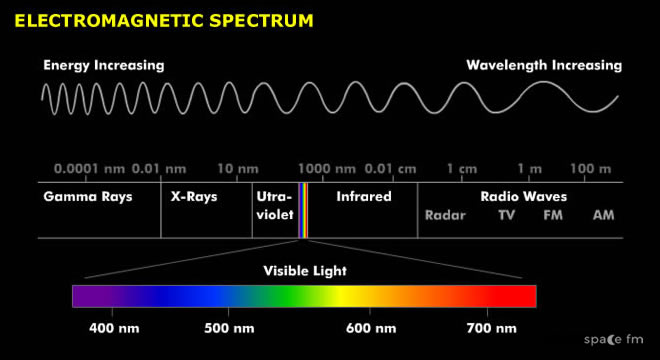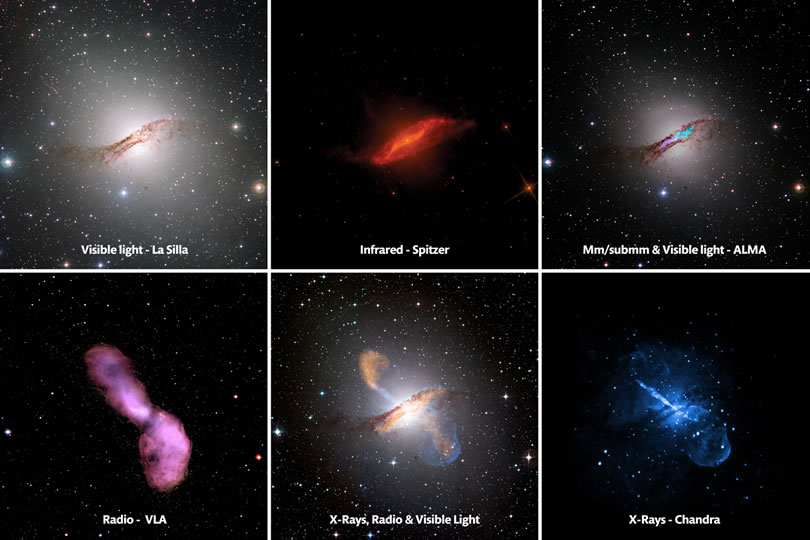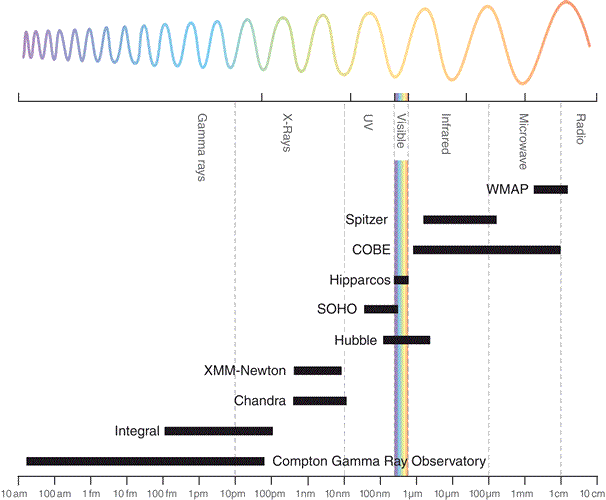Electromagnetic Spectrum
The light that we see from stars is just one form of observing we can do. 'Invisible' Astronomy or Non-optical astronomy tells us a lot about space.
Visible light is a form of radiation travelling at a wavelength millions of a millimetre wide. The light travels as a wave and the wavelength determines the colour seen.
The light that we see from stars is just one form of observing we can do. 'Invisible' astronomy or 'non-optical' astronomy tells us a lot about space.
'Invisible' astronomy is doing the same but at wavelengths that we cannot detect from Earth or see with our eyes. Imagine you switch on an electric fire. Before you see the bars glow you will feel some heat as infrared radiation.
Typically wavelength is shorter if their temperature is higher.
X Rays and Gamma Rays are from sources hotter than those we receive by Radio waves.
Special observing techniques have been produced in order to study bodies best at different parts of the spectrum as our atmosphere is good at deflecting or blocking these waves which is a good thing or the rays would kill us!
Wavelength is measured in nanometres (nm) which is one thousandth-millionth of a metre. Imagine breaking a centimetre into 100 million pieces. Below is a chart of radiation and wavelength.
Data
| Radiation | Wavelength |
|---|---|
| Gamma Rays | < 0.01 nm |
| X-Rays | 0.01nm - 10 nm |
| Ultra Violet | 10nm - 400nm |
| Visible Light | 400nm - 700nm |
| Infra Red | 700nm - 1 mm |
| Microwave | 1mm-300mm |
| Radio Waves | > 300mm |
Mix & Match
Animation
See Also
Links
- EarthSky What is the electromagnetic spectrum?
- Imagine the Universe The Electromagnetic spectrum
- Imagine the Universe Multiwavelength Astronomy



 | © All Rights Reserved |
| © All Rights Reserved |